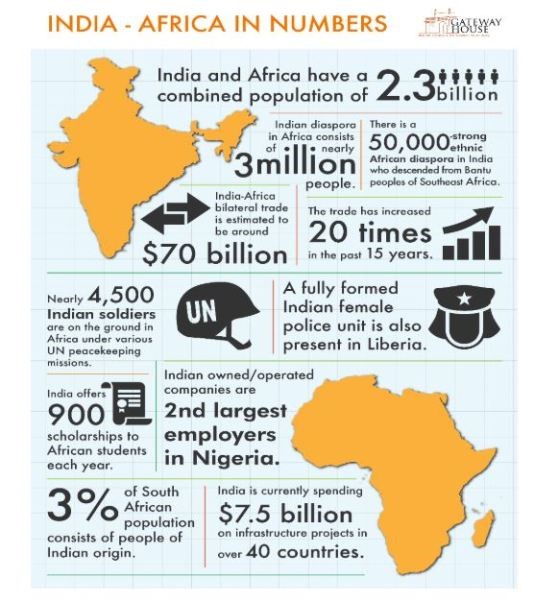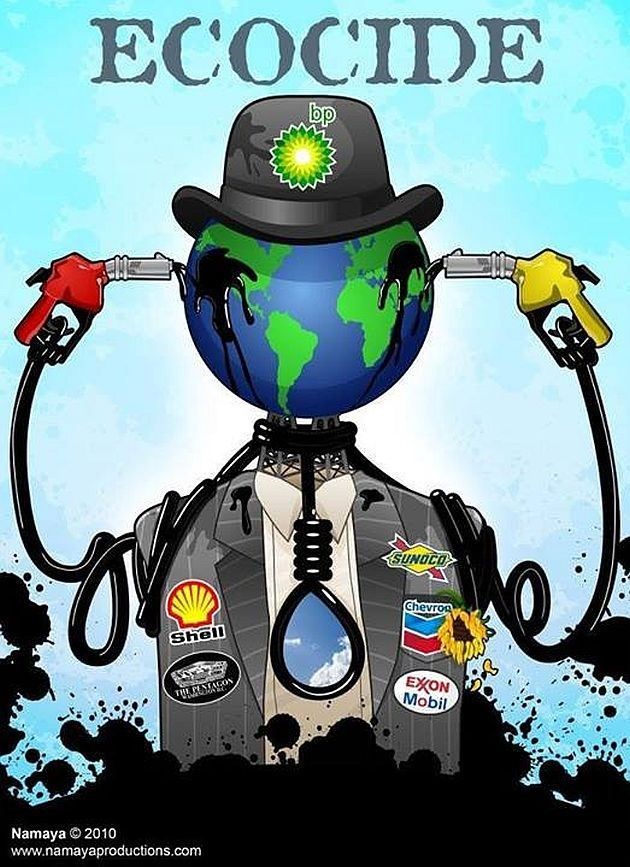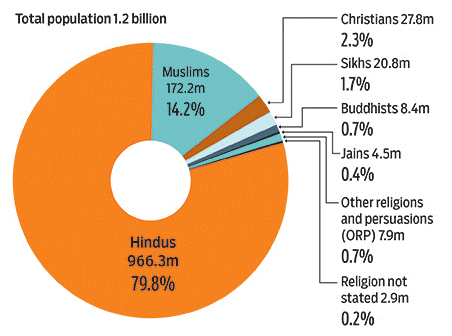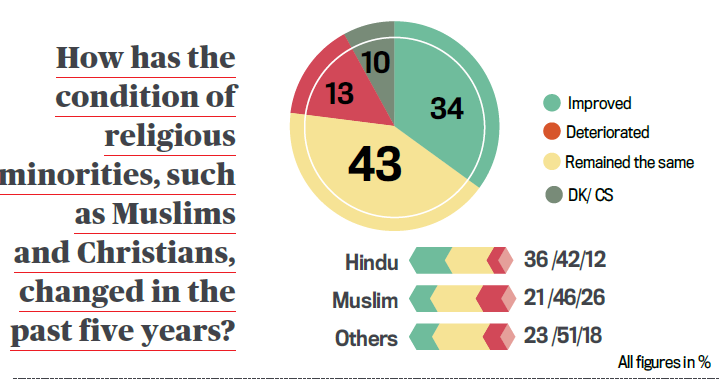Topics:
1. Dark Patterns
2. Heat Index
3. Entry of African Union in G20
4. Criminalising Ecocide
5. Japan’s SLIM Mission
6. Religious Minorities and State of Education Empowerment
Dark Patterns
Context
- The government has opened the door for public input on proposed guidelines intended to prevent and control deceptive tactics known as “dark patterns” on the internet, with a particular focus on e-commerce platforms.
- These guidelines target practices like false urgency, basket manipulation, confirmational manipulation, coercive actions, subscription traps, and other manipulative strategies.
Understanding Dark Patterns
- The draft guidelines define dark patterns as dishonest design techniques that exploit user interface and user experience interactions across various platforms.
- These techniques are crafted to deceive or dupe users into taking actions they did not initially intend or desire.
- Dark patterns erode user autonomy, decision-making, and choices, possibly resulting in deceptive advertising, unfair trade practices, or violations of consumer rights.
Types of Dark Patterns
- “False urgency” involves creating a false sense of urgency among users.
- “Basket manipulation” involves surreptitiously adding items to a user’s cart during the checkout process without their consent.
- “Confirmational manipulation” uses language, multimedia elements, or other methods to elicit fear, shame, mockery, or guilt in users.
- “Coercive actions” force users into actions that lead to additional purchases.
- “Subscription traps” make it excessively challenging for users to cancel paid subscriptions.
- “Interface manipulation” alters the user interface for deceptive purposes.
- “Bait and switch” promotes a specific outcome based on user actions.
- “Drip pricing” hides certain pricing elements until later in the transaction.
- The guidelines also clarify “disguised advertisement” and “nagging.”
Scope of Application
The Ministry has indicated that these guidelines will encompass all individuals and online platforms, including sellers and advertisers.
Challenges in Enforcement
- While legal experts commend the introduction of the draft guidelines, they express concerns regarding enforcement.
- They emphasize the difficulty of definitively proving whether specific practices qualify as dark patterns.
- A notable example is the challenge regulators may encounter in determining the accuracy or deception behind claims like “only 2 rooms remaining – book now!” due to a lack of context.
Some categories of dark patterns, such as e-retail sites adding items to users’ carts without consent, are viewed as more straightforward to regulate, while others, like “disguised advertisements,” may require further clarification.
Heat Index
Context
Iran recently experienced an intense heatwave with a heat index of 70°C along the coastline, which resulted in the declaration of public holidays on August 2 and 3
Regarding the Heat Index:
- The heat index, also referred to as the apparent temperature, provides a measurement of how the weather is perceived by humans, taking into account both the air temperature and relative humidity.
- Robert Steadman developed a formula in 1979 that incorporates air temperature, humidity, and dew point to calculate the heat index.
- Elevated humidity levels during heatwaves can induce heat stress, leading to an increased heart rate and the potential for heat-related illnesses or, in severe cases, fatalities if not addressed promptly.
- The body’s natural cooling mechanism involves sweating, but excessive humidity impedes the evaporation of sweat, making it more challenging to dissipate heat effectively.
- The heat index holds significant importance as it combines temperature and humidity factors, providing a more precise gauge of how heat affects human comfort and well-being.
Extremely high heat index values, such as 67°C, pose substantial health risks, and the ongoing effects of climate change may lead to more frequent and severe heatwaves in the future.
ENTRY OF AFRICAN UNION IN G20
Context:
- Negotiators have affirmed the African Union’s (AU) forthcoming inclusion in the G-20, paralleling the European Union’s (EU) role as a regional entity within the group.
- This development is seen by India as a noteworthy accomplishment for its Presidency, as it advances the interests of the Global South within the G-20.
A Historic Diplomatic Transformation in the G20
- The potential entry of the AU into the G-20 marks a significant shift in diplomatic dynamics, enlarging the group’s representation and influence.
- Notably, China and Russia, despite their differences on other matters, support the AU’s membership, highlighting broader global dynamics at play.
Understanding the African Union
- The African Union (AU) is an intergovernmental organization located in Africa, established in 2002 as the successor to the Organization of African Unity (OAU).
- Comprising 55 African member states, its primary objectives include fostering unity, cooperation, and development across the continent, addressing social, political, and economic challenges faced by African nations, and promoting peace, security, and stability in Africa.
Historical Context of India-Africa Relations
- Ancient Period:
- Ancient Trade Connections: Indian merchants engaged in trade with the African coast, exchanging valuable goods such as palm oil, gold, spices, and ivory.
- Maritime Trade Network: Trade routes expanded from Egypt to northern Somalia, Punt, Sudan, and Axum, enhancing economic and cultural ties.
- Medieval Era:
- Indian Presence in East Africa: Gujarati and Saurashtrian merchants played a significant role in trade along Africa’s east coast, using Indian systems of weights, measures, and currency.
- Development of Internal Links: Indian trade contributed to the development of internal connections within Africa, even before European involvement.
- Colonial Period:
- Impact of European Colonialism: European colonial powers reshaped the Indian presence in Africa.
- Anti-Apartheid Struggle: Mahatma Gandhi’s involvement in the anti-apartheid movement in South Africa laid the foundation for India’s solidarity with Africa.
- Advocacy Against Apartheid: India actively raised the issue of apartheid in international forums like the UN, NAM, and Commonwealth.
- Post-Colonial Period:
- Continuation of Afro-Asian Solidarity: India’s approach to Africa has been guided by the vision of commerce in ideas and services rather than raw materials.
- Phases of Engagement: India’s Africa policy evolved from Nehru’s focus on Afro-Asian solidarity through phases of neglect and re-engagement.
Current State of Relations
- Institutionalization of Relations: The India-Africa Forum Summit serves as the framework for India-Africa relations under South-South Cooperation.
- Expanded Diplomatic Presence: India has announced the establishment of embassies in 18 African countries, strengthening diplomatic ties.
- Economic Engagement: Bilateral trade between India and Africa has experienced significant growth, with India becoming Africa’s third-largest trade partner.
- Investment and Development Cooperation: Indian investments in Africa have increased, making India the seventh-largest investor in the region.
- Lines of Credit (LoC): India’s concessional LoCs support development projects in Africa, totaling 182 projects with an amount of US$10.5 billion.
- Bilateral Cooperation: Collaboration spans various areas, including solar energy, climate change, information technology, maritime security, counter-terrorism, and military training.
- Soft Power Projection: India’s ITEC program provides scholarships to African students, and the Indian diaspora contributes to cultural exchange.
Significance of Africa
- Geostrategic Importance:
– Proximity to India: Africa’s Horn region is vital for India’s security due to emerging threats like radicalism, piracy, and organized crime.
- Economic Significance:
– Diversifying Energy Sources: Africa can aid India in diversifying its energy sources in alignment with the Integrated Energy Policy.
– Abundant Resources: Africa possesses valuable minerals, metals, and ample agricultural land, addressing India’s food security and resource needs.
– Market and Investment Opportunities: Africa offers opportunities for Indian investments and trade expansion, fostering economic cooperation.
- Geopolitical Considerations:
– Support for UNSC Seat: Africa’s support is crucial for India’s aspiration to secure a permanent seat on the UN Security Council.
– Projection of Soft and Hard Power: India showcases its soft and hard power in Africa, contributing to its global influence.
– Peacekeeping and Capacity Building: India actively participates in UN peacekeeping operations and supports capacity building in African countries, strengthening bilateral ties.
Challenges and Strategies
- Declining Trade and Investment: Efforts are needed to enhance economic ties, as bilateral trade and Indian investments in Africa have experienced fluctuations.
- Short-Term Focus: LoCs have primarily funded small-scale projects and require a broader development perspective.
- Competition from Other Powers: India faces competition from countries like China, Brazil, and Russia in engaging Africa across various sectors.
- Lack of Synchronization: Development instruments like LoCs, grants, and capacity-building initiatives operate independently, lacking coordination.
- Instances of Racial Attacks: Incidents of violence against African students in India pose challenges to people-to-people connections.
Addressing the Chinese Challenge in Africa
– China’s Extensive Investments: China’s substantial investments in Africa have had a significant impact on the region, spanning infrastructure, finance, natural resources, and maritime interests.
Strategies for India
- Develop a Comprehensive Africa Strategy: India should formulate a comprehensive strategy for the next decade, identifying key areas of cooperation.
- Focus on Capacity Building: Investing in human capital is crucial for sustainable development in Africa.
- Collaborate with Civil Society Organizations and Diaspora: Indian organizations and the diaspora can play a vital role in implementing cost-effective development projects.
- Ensure Timely Project Completion: Efforts should be made to expedite LoC projects, drawing lessons from countries with better implementation records.
Steps Taken So Far
- Indian Technical and Economic Cooperation (ITEC) Program: India’s ITEC program provides technical assistance to African countries, with approximately 50% of ITEC slots reserved for Africa.
- Asia-Africa Growth Corridor: The AAGC, a cooperation agreement between India, Japan, and African countries, aims to foster inclusive development.
- Pan African e-Network: The PAeN facilitates tele-education and telemedicine in Africa, contributing to technological advancement.
- Maritime Cooperation: India’s collaboration with African nations in the maritime domain, including joint exercises, promotes regional security.
- Peacekeeping Operations: India actively participates in UN peacekeeping operations in Africa, supporting African counter-terrorism efforts and capacity building.
- Duty-Free Tariff Preferential Scheme: India’s scheme benefits African nations, with the India-Africa Forum Summit playing a vital role in strengthening ties.
- India-Africa Defence Ministers Conclave: Initiatives like this enhance defence cooperation and bilateral relations.
The Path Ahead
- Enhance Mutual Engagement: Organize the pending fourth India-Africa Forum Summit to further strengthen the relationship.
- Allocate Fresh Financial Resources: Allocate new resources for grants and concessional loans, prioritizing economic relations.
- Focus on Emerging Sectors: Develop collaborations in health, space, and digital technologies to give a 21st-century dimension to the partnership.
- Continued Support in Peacekeeping: Sustain India’s contributions to peacekeeping, counter-terrorism, and capacity building in Africa.
- Improve Experiences of Africans in India: Ensure the safety and well-being of Africans studying or working in India, promoting people-to-people connections.
- Promote Development-Friendly Private Investments: Align development cooperation with commercial interests to support mutually beneficial projects.
Strengthen International Cooperation: Collaborate with international allies to address the China challenge in Africa, emphasizing partnership-based approaches.
CRIMINALISING ECOCIDE
Context
- The controversial Maya train project in Mexico is aimed at connecting tourists with historic Maya sites, but it has raised concerns regarding its potential impact on the environment and culture.
- This ongoing debate highlights the concept of “ecocide” and the growing global movement to criminalize actions that harm the environment.
What is Ecocide?
- Ecocide, a term derived from Greek and Latin, translates to ‘killing one’s home’ or ‘environment.’
- Although there isn’t a universally recognized legal definition of ecocide, a group of lawyers convened by the NGO Stop Ecocide Foundation in June 2021 crafted a definition that places environmental devastation on par with crimes against humanity.
- According to their proposal, ecocide is defined as “unlawful or reckless actions carried out with the awareness that there exists a substantial probability of causing severe and either extensive or enduring harm to the environment.”
Historical Context:
- In 1970, biologist Arthur Galston was the first to link environmental devastation to genocide, an internationally recognized crime.
- He made this connection when addressing the U.S. military’s use of Agent Orange, an herbicide, during the Vietnam War.
- Swedish Prime Minister Olof Palme also referenced this concept in a speech at the United Nations, warning about the irreversible harm to the environment resulting from uncontrolled industrialization.
- In 2010, a British lawyer played a pivotal role by urging the United Nations’ International Criminal Court (ICC) to officially acknowledge ecocide as an international crime.
- Currently, the Rome Statute of the ICC addresses four major offenses: genocide, crimes against humanity, war crimes, and the crime of aggression.
- The provision related to war crimes is the only statute that can hold wrongdoers accountable for environmental destruction, but only if it is intentionally caused during times of armed conflict.
The Current Status of Ecocide Acknowledgment in India:
- India has neither signed nor ratified the Rome Statute of the International Criminal Court and has not expressed any official position on the proposal to criminalize ecocide at the international level.
- However, India has ratified several international environmental treaties and conventions, such as the Convention on Biological Diversity, the United Nations Framework Convention on Climate Change, and the Convention on International Trade in Endangered Species of Wild Fauna and Flora.
- India has also enacted various national laws and policies to protect and conserve its environment, including the Environment Protection Act 1986, the Wildlife Protection Act 1972, and the Compensatory Afforestation Fund Act, 2016 (CAMPA).
- Although some Indian court judgments have casually used the term ‘ecocide,’ the concept has not been formally integrated into Indian law.
- For instance, in the case of Chandra CFS and Terminal Operators Pvt. Ltd. v. The Commissioner of Customs and Ors (2015), the Madras High Court noted the continuous and unbridled activities related to the removal of valuable timbers as a form of ecocide.
Similarly, the T.N. Godavarman Thirumulpad vs Union Of India & Ors (1995) case in the Supreme Court emphasized the need to shift from an anthropocentric approach to an ecocentric approach for achieving environmental justice.
Arguments in Favor of Criminalizing Ecocide:
- Protecting the Environment as an End in Itself: Ecosystems are intricate networks of species and interactions that have evolved over millions of years. Protecting the environment as an end in itself recognizes the importance of preserving these ecosystems in their natural state to maintain their integrity and evolutionary potential. Ecocide laws fill a gap in environmental protection, recognizing the environment as an entity worthy of safeguarding.
- Intergenerational Justice: Advocates argue that ecocide can be seen as accumulating a “biodiversity debt” that future generations must repay. By recognizing ecocide as a crime, society acknowledges its obligation to leave a sustainable and habitable planet for posterity.
- Climate Change Mitigation: Addressing ecocide through criminal law serves as a vital complement to international climate agreements by directly targeting the root causes of climate change. Activities such as large-scale deforestation and uncontrolled fossil fuel extraction are considered ecocidal. Criminalizing ecocide adds a strong legal dimension to environmental protection, holding individuals and entities accountable for actions that harm the climate.
- Expanding Global Recognition and Legal Action: Ecocide is already considered a crime in 11 countries, with 27 more contemplating similar legislation. Ecocide laws can also serve as powerful calls for justice, especially for low- and middle-income countries bearing the brunt of extreme weather events. Small nations like Vanuatu and Barbuda are urging the ICC to classify environmental crimes as international law violations.
Arguments Against Criminalizing Ecocide:
- Development vs. Environmental Protection: Critics argue that defining ecocide may inadvertently pit development goals against environmental conservation. For instance, projects like the Great Nicobar Project in India faced criticism for potentially harming indigenous communities and biodiversity, while the government defended it as an initiative for “holistic development.”
- Interference with Sovereignty: Some argue that criminalizing ecocide may infringe upon a nation’s sovereignty. Countries may view such laws as encroachments on their ability to manage their own environmental policies and resources, leading to resistance or non-compliance.
- Chilling Effect on Scientific Research: Scientists and researchers could be deterred from conducting studies that involve environmental manipulation or experimentation due to the fear of potential legal repercussions. This could impede scientific progress and our understanding of complex ecological systems.
- Efficacy and Enforcement Challenges: Critics question the effectiveness of criminalizing ecocide in deterring environmental harm. They argue that existing environmental regulations, when rigorously enforced, can be more effective than creating a new criminal framework that may be challenging to enforce.
The Way Forward:
Regardless of whether ecocide is criminalized, the primary goal should always be the protection and preservation of the environment.
Introducing the concept of ecological restoration bonds could be a way to hold companies responsible for environmental harm, ensuring that the cost of restoration is borne by the responsible parties.
Additionally, mandatory environmental education in schools and universities could raise awareness about environmental rights and responsibilities, empowering citizens to advocate for the environment and engage in discussions surrounding ecocide.
Japan’s SLIM Mission
Context:
- In recent news, Japan has launched its Moon-lander mission known as SLIM.
- If this mission accomplishes a successful lunar landing, it will mark a significant achievement for Japan, positioning it as the fifth nation globally to achieve such a feat.
The Smart Lander for Investigating Moon (SLIM) Mission
- The Smart Lander for Investigating Moon (SLIM) Mission was launched by Japan, utilizing its H-IIA rocket to transport SLIM into space.
- The same rocket also carried an additional payload, the X-Ray Imaging and Spectroscopy Mission (XRISM), designed for astronomical observations.
- Notably, this marks Japan Aerospace Exploration Agency’s (JAXA) inaugural attempt at a Moon landing.
A Unique Journey to the Moon
- What sets SLIM apart is its unconventional approach to reaching the Moon.
- It is taking a distinctly elongated route, with a landing scheduled in a timeframe spanning four to six months.
- In the event of a successful landing, SLIM will hold the distinction of being the smallest and lightest spacecraft ever to touch down on the lunar surface.
Technical Details of SLIM
In terms of technical specifications, SLIM is a compact spacecraft, weighing in at approximately 200 kg.
Mission Objectives: Precision Landing
The primary goal of the SLIM mission is to showcase precision landing capabilities, with the aim of achieving accuracy within a mere 100 meters of the designated landing site.
RELIGIOUS MINORITIES AND STATE OF EDUCATION EMPOWERMENT
In News:
- Recently, there has been increased scrutiny regarding the status of educational empowerment initiatives designed for religious minority groups in India.
- These programs were originally established with the aim of narrowing educational disparities and fostering inclusivity among various religious communities within the country.
- However, they have undergone significant changes and become embroiled in controversies, giving rise to concerns about their impact on minority communities.
What is the Current Status of Educational Empowerment Schemes for Religious Minorities in India?
Overview:
Religious minorities in India, including Muslims, Christians, Sikhs, Buddhists, Jains, and Zoroastrians, constitute a significant portion of the population, accounting for approximately 20%.
- The Sachar Committee’s 2006 report brought attention to these disparities, placing Muslims behind several other demographic groups in terms of development indicators.
- To address these disparities, the government established the Ministry of Minority Affairs in 2006, with a focus on areas such as educational empowerment, economic development, infrastructure improvement, and addressing the specific needs of religious minority communities.
Scholarships for minority students became a central component of this initiative, aimed at providing financial assistance and facilitating access to quality education.
Current Status of Welfare Schemes for Educational Empowerment of Minorities:
- Pre-Matric Scholarship Scheme: Originally provided to minority students from class 1 to 10 but was later restricted to covering only class 9 and 10 in its revised form, discontinuing support for classes 1 to 8. The government justified this decision by citing the Right to Education Act (RTE Act), which mandates compulsory education up to class 8 for all students.
- Post-Matric Scholarship Scheme: Designed for students from class 11 onwards, including those pursuing Ph.D. studies. The funds allocated to this scheme increased from Rs 515 crore to Rs 1,065 crore in the 2023-24 fiscal year.
- Merit-cum-Means based Scholarship Scheme: Initially targeted professional and technical courses at the undergraduate and postgraduate levels. However, it faced a significant reduction in funding in the 2023-24 fiscal year.
- Maulana Azad National Fellowship (MANF): Offered financial assistance to research scholars pursuing M.Phil and Ph.D. degrees but was discontinued in 2022.
- Padho Pardesh: Provided an interest subsidy on education loans for overseas studies but was discontinued starting from the 2022-23 fiscal year.
- Begum Hazrat Mahal National Scholarship: Intended for meritorious girls pursuing higher secondary education but did not receive funding allocation in 2023-24.
- Naya Savera: Offered free coaching to minority students preparing for competitive exams but was discontinued in 2023-24.
- Nai Udaan: Supported minority students preparing for various examinations but did not receive funding allocation in 2023-24.
- Scheme for Providing Education to Madrasas and Minorities (SPEMM): Aimed at modernizing madrasa education, but it faced a reduction in allocation for the 2023-24 fiscal year.
What are the Constitutional Provisions Related to Religious Minorities?
- Article 25 guarantees freedom of conscience and the right to freely profess, practice, and propagate religion to all individuals.
- Article 26 grants every religious denomination or its section the right to establish and maintain institutions for religious and charitable purposes, as well as the authority to manage its own religious affairs.
- Article 29 stipulates that any section of citizens residing in any part of India with a distinct language, script, or culture shall have the right to conserve the same.
- Article 30 ensures that all religious minorities have the right to establish and administer educational institutions of their choice.
What are the Other Major Challenges Related to Religious Minorities?
- Communal Violence: One significant challenge is the occurrence of communal violence, where conflicts erupt along religious lines, resulting in loss of life, property damage, and the displacement of minority communities. This challenge is rooted in factors like political manipulation, economic disparities, and historical tensions that require careful examination.
- Intersectional Discrimination: In addition to religious discrimination, religious minorities, especially women, may experience intersectional discrimination.
- Social Isolation: Religious ghettoization, where minority communities cluster in specific neighborhoods, can impact their social integration and economic opportunities.
- Cyberbullying and Online Harassment: The rise of cyberbullying and online harassment targeting religious minority individuals or groups is affecting their online safety and mental well-being.
Way Forward
- Leverage Public-Private Partnerships: Foster collaborations between the government, private sector, and non-profit organizations to supplement funding and resources for minority education initiatives. This can help mitigate budget cuts and ensure sustained support for these programs.
- Digital Literacy Programs: Implement digital literacy programs tailored for religious minority communities to ensure they are not left behind in the digital age, enhancing their access to information and opportunities.
- Local Level Initiatives: Empower local communities to take the lead in promoting interfaith dialogue and cooperation, as grassroots initiatives can significantly contribute to building trust and social cohesion. Establishing community-based conflict resolution centers specialized in addressing interfaith and inter-community disputes can provide mediation and counseling services.
- Traditional Knowledge Preservation: Recognize and preserve traditional knowledge systems and practices of religious minority communities through digital documentation and funding for cultural preservation projects.
5. Social Impact Assessment and Investment: Conduct time-bound social impact assessments and encourage social impact investment in businesses and startups owned by religious minorities. This can foster economic independence and reduce disparities.









